Sotheby's International Realty
- 138 Avenue Victor Hugo
- 75116 PARIS, France
- +33 1 40 60 50 00
Sotheby's International Realty
- 50 rue d'Auteuil
- 75016 PARIS, France
- +33 1 56 26 56 55
Sotheby's International Realty
- 82 Avenue de Wagram
- 75017 PARIS, France
- +33 1 46 22 27 27
Sotheby's International Realty
- Place Sainte Foy - 2 Rue de Chézy
- 92200 NEUILLY, France
- +33 1 41 43 06 46
Sotheby's International Realty
- Place Sainte Foy - 2 rue de Chézy
- 92200 NEUILLY, France
- +33 1 41 25 00 00
Sotheby's International Realty
- 37-39 rue de Turenne
- 75003 PARIS, France
- +33 1 48 87 14 41
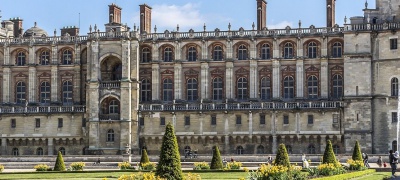
Saint-Germain-en-Laye
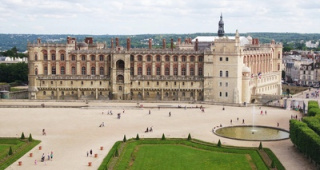
The Quintessence of Royal History and Timeless Elegance
Saint-Germain-en-Laye, located about twenty kilometers west of Paris, embodies the perfect blend of royal history, timeless elegance, and exceptional quality of life. Known as the birthplace of the Sun King, Louis XIV, this city captivates with its rich cultural heritage and verdant surroundings. Its proximity to Paris and Versailles has, over the centuries, made it a hunting ground and a favored residence of the French royalty.
A Privileged Living Environment
The charm of Saint-Germain-en-Laye lies in its historic architecture, iconic monuments, and vast green spaces. The Château de Saint-Germain-en-Laye, built in the 12th century and renovated by François I, now houses the National Archaeology Museum, offering a fascinating journey through France's history. The famous terrace of the château, designed by Le Nôtre, provides a breathtaking panoramic view of the Seine Valley and the capital.
A Prestigious Real Estate Market
The real estate market in Saint-Germain-en-Laye stands out with its offering of prestigious properties, ranging from Haussmann-style apartments to historic homes and luxury villas. Residences in this royal city often feature private gardens, expansive terraces, and high-end finishes, meeting the expectations of the most discerning buyers. The average price per square meter is €8,464, with variations depending on the area, ranging from €4,010 to €12,328.
An Elegant and Refined Lifestyle
Living in Saint-Germain-en-Laye means enjoying a refined lifestyle, where every street corner exudes elegance and history. The city offers a variety of luxury boutiques, gourmet restaurants, and traditional markets, providing an unparalleled shopping and dining experience. Art and culture enthusiasts will also delight in the numerous art galleries and cultural events held throughout the year.
Outdoor Leisure and Activities
The green spaces of Saint-Germain-en-Laye are one of its major assets. The château park, with its state forest of over 3,500 hectares, is an ideal spot for walks, jogging, and family picnics. Golfers will appreciate the prestigious Golf de Saint-Germain, a historic and renowned course for its quality.
Education and Accessibility
The city is also renowned for the quality of its schools, notably the Lycée International de Saint-Germain-en-Laye, which offers a multilingual curriculum of international repute. Saint-Germain-en-Laye is easily accessible via the RER A, allowing quick access to the heart of Paris while offering a peaceful and verdant living environment.
Why Choose Saint-Germain-en-Laye?
- An exceptional historical heritage: Château, terraces, royal monuments.
- A luxurious and green living environment: Forests, parks, panoramic views.
- A prestigious real estate market: Haussmann-style apartments, luxury villas, historic homes.
- A rich cultural and gastronomic offer: Starred restaurants, art galleries, cultural events.
- Top-tier educational institutions: Lycée International, quality schools.
- Proximity to Paris and Versailles: Quick access via RER A, calm environment.
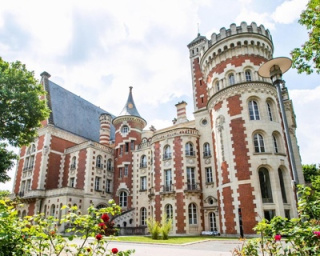
Hennemont’s Castle - International High School
A Historic and Picturesque Setting
Located in Saint-Germain-en-Laye, the Lycée International Château d’Hennemont stands out for its unique historic setting. Housed in the magnificent Château d’Hennemont, this institution offers a serene and inspiring environment for students, blending architectural elegance with vast green spaces.
An International Program
The school offers an international and multilingual educational program, with classes taught in French, English, German, Spanish, Japanese, and more. This linguistic diversity allows students to develop advanced skills and deep cultural understanding.
Academic Excellence
The Lycée International Château d’Hennemont is dedicated to academic excellence. Students benefit from high-quality teaching provided by experienced teachers. The wide range of subjects offered prepares students for the best universities in the world.
Dynamic and Inclusive Community
With students from over 50 nationalities, the school offers a community rich in cultural exchange. Extracurricular activities and intercultural projects enhance students' open-mindedness and civic engagement.
Modern Facilities
The school is equipped with modern classrooms, science labs, art rooms, a well-stocked library, and sports facilities. These resources complete the educational experience and support students' development.
A Preferred Choice
The Lycée International Château d’Hennemont is a preferred choice for expatriate and local families seeking a quality education. Close to Paris and Versailles, it offers a peaceful and secure living environment, ideal for an excellent education.
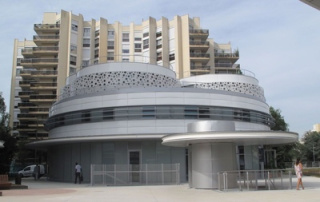
Les Rotondes Saint-Léger : A Historic and Architectural Gem
Located in Saint-Germain-en-Laye, the Rotondes Saint-Léger are a true architectural and historical treasure. Built in the 19th century, these elegant circular structures stand out for their neoclassical style and stone façades. Originally constructed as water reserves for the château, the Rotondes have been carefully restored to preserve their historic charm while integrating contemporary elements.
A Unique Venue for Arts and Culture
"The Rotondes Saint-Léger are now a landmark of cultural life in Saint-Germain-en-Laye. They regularly host art exhibitions, concerts, and a variety of cultural events, attracting a diverse and passionate audience. This unique venue offers exceptional acoustics, perfect for musical performances, and an intimate setting that highlights the showcased artworks."
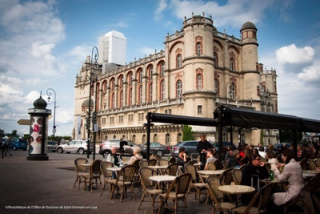
Downtown - Le Plateau
The Historic Heart of Saint-Germain-en-Laye
The city center of Saint-Germain-en-Laye, the true historic heart of the city, is the birthplace of its history. The city entered history in 1557 when King Henry II ordered the construction of the Château de Saint-Germain. Louis XIV resided at the Château Neuf at the beginning of his reign, and although the king and court moved to Versailles in 1682, houses continued to be built around the château and its parks. With the French Revolution, the château was largely destroyed.
A Busy and Attractive City Center
Today, this historic district has become the bustling city center of Saint-Germain-en-Laye. This heart of the city, enhanced over the years, is now a very commercial area, attracting both residents and visitors. Its residential spaces and numerous parks make it a popular destination for families. The city center of Saint-Germain-en-Laye is a harmonious blend of historical heritage and modernity, offering an exceptional quality of life in a unique setting.




